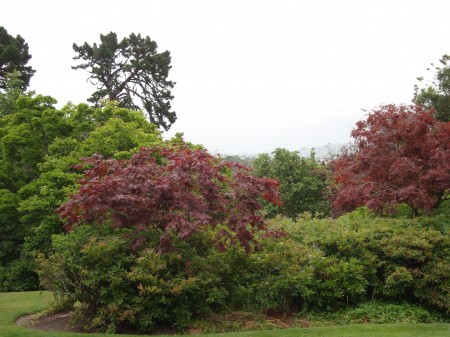Cancer Reading
Some of these books have been recommended by Pam Stevens, whose book is on this list. Others have been taken from the booklist of Dr Janice-Ann Priest, a New Zealand doctor who wrote ‘Our Health At Risk’, 2003. The list includes books written from a political standpoint, as well as books which give healing help.
If you have cancer, or some other serious degenerative disease such as AIDS, or multiple sclerosis, then it is important to read as much as you can. This will give you encouragement, and help you in understanding the disease, and perhaps why you have succumbed to it. Reading about different treatments will also enable you to make an informed decision about what treatment you should have, what treatment will be practical for you, and who might be able to help you. I have included some of the books which I have found particularly good in understanding illness and curing it, for example Walter Last’s work.
Ausubel, Kenny. When Healing Becomes A Crime. Healing Arts Press. ISBN 0-89281-925-1 The Amazing Story of the Hoxsey Cancer Clinic.
Bealle, Morris. The Drug Story. Bi-World Publishers.
Blanc, Albert. Money, Medicine, and the Masses. 1949.
Carter, James, MD. Racketeering In Medicine: The Suppression Of Alternatives. 1993. ISBN 1-878901-32-x Note: This book which discusses the monopoly of drug companies and the suppression of healthier alternatives, is written by a medical doctor.
Chopra, Deepak. Ageless Body, Timeless Mind. Deepak Chopra is an authority on mind and body medicine. He has written many books on healing and is an acclaimed exponent of the ancient Hindu teachings on Ayurveda.
Cousins, Norman. Anatomy Of An Illness. Published by W.W. Norton and Company, Inc. 1979.
Day, Phillip. Cancer: Why We’re Still Dying To Know The Truth. Credence Publications, 1999
ISBN 10: 0953501248
Day, Phillip. Health Wars. Credence Publications. ISBN 0-9535012-7-2
Ellerbroek, Dr W.C. In Medicine And The Mind, article by David Black. April 1980 Issue of Playboy Magazine.
Lappe, Frances Moore. Diet For A Small Planet. Random House, New York, 1971; Ballantyne, New York, 1974.
Last, Walter. Heal Yourself. Published in the 1970s in New Zealand. Walter has since published other health books for those treating serious disease such as cancer. There are several publications which have been published in Australia.
Lee, William, RPh.PhD. The Killer Plagues To Come. 1995.
Lewis, Gerald & Lewis, Monica (Drs). Cancer: A Threat To Your Life? Or A Chance To Take Control Of Your Future? Lewis Pblications: Auckland, 2006. ISBN: 0473113279
MacWilliam, Lyle. Comparative Guide To Nutritional Supplements. Northern Dimensions Publishing, 2005. ISBN 10: 0973253835
Ransom, Steven. Great News On Cancer in the 21st Century. Credence Publications. ISBN: 1904015077
Moss, Ralph. The Cancer Industry. Equinox Press, 1996. ISBN 10: 1881025098
Moss, Ralph. Questioning Chemotherapy. Equinox Press, 1995. ISBN 10: 188102525X
Priest, Dr Janice-Ann Priest. Our Health At Risk: What’s Going Wrong With Our Health System? Published by Herbal Limited, P.O. Box 6041, Tauranga, New Zealand. 2003. ISBN 0-473-08952-1 Website: www.greenpharmasy.co.nz
Rosenburg, Max, MD. Medicine For The Millions. Published by Books Inc. New York.
Sellman, Sherrill. Hormone Heresy: What Women Must Know About Their Hormones. Get Well International, 2000. ISBN 10:
0958725209
Stevens, Pam. Breast Cancer: Why Women Are Dying Needlessly. PMS Publications, 92 Albany Highway, Albany Auckland, New Zealand. 2007.
Schafer, Joachim. The Trial Of The Medical Mafia. ISBN 2-921783-02-9
Siegel, Bernie. Love, Medicine and Miracles. Published by Rider, Ebury Press, Random House UK Ltd, 20 Vauxhall Bridge Road, London SW 1V 2SA. 1986, 1999. Also Random House New Zealand Ltd, 18 Poland Road, Glenfield, Auckland 10, New Zealand.
Siegel, Bernie. Peace, Love And Healing: The Path To Self-Healing. Bernie Siegel’s work is endorsed by Elizabeth Kubler-Ross: Bernie Siegel began a non-profit organization to help cancer patients, AIDS sufferers, and those suffering other life-threatening diseases. This is called ECaP – Exceptional Cancer Patients. You can order other helpful books and tapes through Exceptional Cancer Patients. Write to ECaP, PO Box 8591, New Haven, Connectict 06531 USA. Phone (203) 8658392. Visit www.healthy.net/ECAP. Bernie’s books and tapes may also be purchased at order @harpercollins.com
Strand, Ray (Dr). What Your Doctor Doesn’t Know About Nutritional Medicine May Be Killing You. Thomas Nelson, 2002. ISBN 10: 0785264868
Walker, Martin J. Dirty Business. Slingshot Publications, London. 1994. ISBN 0-9519646-0-7 This book describes the big business in pharmaceuticals and medicines. Martin Walker explains why these big businesses have an assault initiative on the natural health industry in order to try and eliminate the healthier alternatives which threaten their monopoly of the market. Martin Walker has researched the relationship between the American Medical Association and those organisations who are in the business of marketing medicines.
www.adrugrecall.com
www.cancerdecisions.com
www.mercola.com
www.preventcancer.com
www.nlm.nih.gov/medlineplus/druginfo

